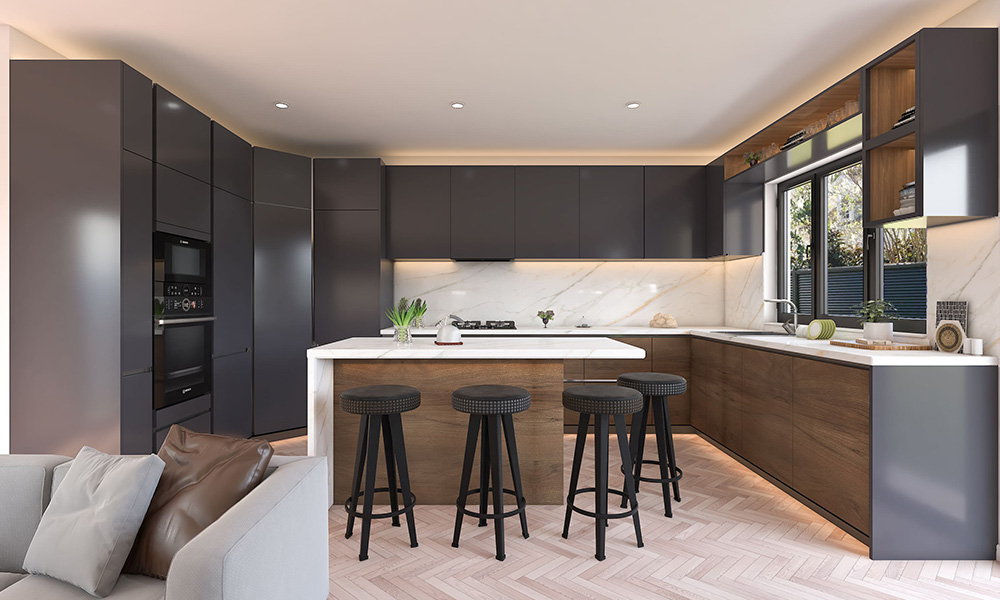The kitchen is the heart of the home, and its design has evolved significantly over time. Historically, kitchens were purely functional spaces, designed solely for cooking and food preparation. However, in recent years, there has been a shift towards creating kitchens that are not only functional but also serve as gathering spaces for family and friends to come together. This evolution has been driven by a combination of factors, including changing lifestyles, technological advancements, and shifting cultural norms.
Functional Kitchens
For much of history, kitchens were small, utilitarian spaces that were separate from the rest of the home. They were designed to be efficient workspaces for cooking and food preparation, with little thought given to aesthetics or comfort. Kitchens typically featured only the bare essentials, including a stove, a sink, and some basic storage. In many cases, cooking was done over an open flame, and there was no running water or electricity.
As technology advanced and modern conveniences such as refrigeration and electric stoves became more widely available, kitchens began to evolve. The introduction of these new appliances allowed for more efficient food storage and preparation, and as a result, kitchens started to become more functional and practical.
The Rise of the Open Concept Kitchen

In the mid-20th century, there was a significant shift in kitchen design. Instead of being separate, closed-off spaces, kitchens began to be integrated into the rest of the home. This was largely due to the rise of the open concept floor plan, which became increasingly popular in the 1950s and 1960s.
The open concept kitchen was designed to be a central hub for the home, with easy access to other living areas. This layout allowed for more social interaction and made it easier for families to spend time together while cooking and entertaining. The open concept kitchen also allowed for more natural light to enter the space, making it feel brighter and more welcoming.
The Modern Gathering Space
Today’s kitchens have evolved even further, with a focus on creating spaces that are not only functional but also serve as gathering spaces. Modern kitchens are designed with entertaining in mind, featuring ample seating, large islands, and open floor plans that make it easy for guests to move around and socialize.
One of the biggest trends in modern kitchen design is the use of high-end appliances and materials. Stainless steel appliances, granite countertops, and custom cabinetry are just a few of the features that are commonly found in today’s kitchens. These materials not only look great but also offer superior functionality and durability.
Another trend in modern kitchen design is the use of technology. Smart appliances, such as refrigerators that can be controlled with a smartphone, are becoming increasingly popular. These appliances not only make life easier but also add a high-tech, futuristic feel to the kitchen.
The Bottom Line
The evolution of kitchen design has been driven by a desire to create spaces that are not only functional but also welcoming and comfortable. While kitchens were once purely utilitarian spaces, they have become the heart of the home, where families and friends can gather to cook, eat, and socialize. Whether you prefer a sleek, modern kitchen or a cozy, traditional space, there are endless design options available to create the perfect gathering space for your home.

